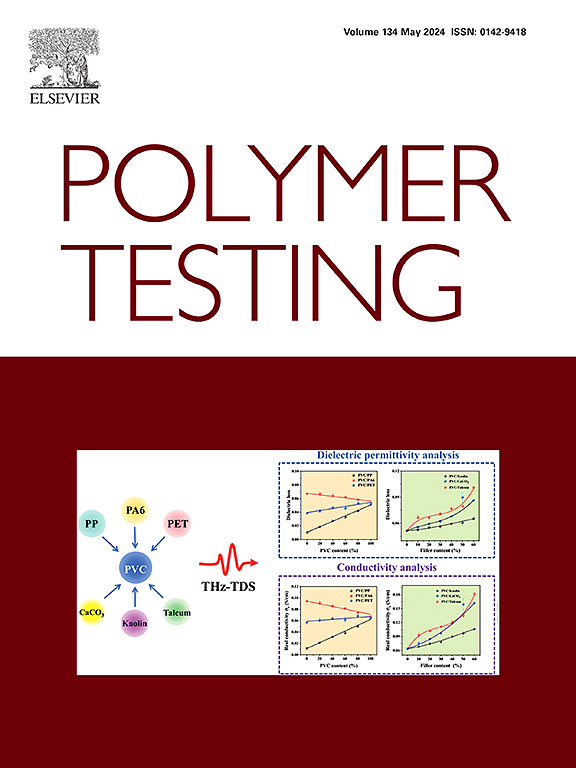Experimental investigation of freeze-thaw environmental effects on the fatigue life of CFRP composites
IF 5
2区 材料科学
Q1 MATERIALS SCIENCE, CHARACTERIZATION & TESTING
引用次数: 0
Abstract
This paper investigates the effect of Freeze-Thaw (FT) environments on the fatigue behavior of carbon fiber-reinforced polymer (CFRP) composites under extreme conditions. The effect of FT cycles on CFRP fatigue life has not been previously studied. In this paper, three types of specimens (open-hole, transverse, and shear) were subjected to FT cycles: freezing at −60 °C and thawing at 30 °C. Open-hole specimens (OHS) were subjected to 0, 50, and 100 FT cycles before being tested at stress ratios R = 10 and R = −1, while transverse (TS) and shear specimens (SS) were exposed to 0 and 100 FT cycles and tested under R = −1. Fracture surfaces were analyzed using Scanning Electron Microscopy (SEM). SEM observations revealed that the FT cyclic environment weakened the fiber-matrix bond across all specimens. However, the fatigue life of CFRP is primarily governed by dominant failure mechanisms, which depend on the stress ratio and laminate configuration. In SS, where fiber-matrix debonding is the primary failure mechanism, the FT environment directly affected fatigue life, significantly reducing fatigue resistance. In contrast, the fatigue life of OHS and TS was predominantly determined by the specific failure mechanisms characteristic of each laminate rather than being directly influenced by the FT environment.
求助全文
约1分钟内获得全文
求助全文
来源期刊

Polymer Testing
工程技术-材料科学:表征与测试
CiteScore
10.70
自引率
5.90%
发文量
328
审稿时长
44 days
期刊介绍:
Polymer Testing focuses on the testing, analysis and characterization of polymer materials, including both synthetic and natural or biobased polymers. Novel testing methods and the testing of novel polymeric materials in bulk, solution and dispersion is covered. In addition, we welcome the submission of the testing of polymeric materials for a wide range of applications and industrial products as well as nanoscale characterization.
The scope includes but is not limited to the following main topics:
Novel testing methods and Chemical analysis
• mechanical, thermal, electrical, chemical, imaging, spectroscopy, scattering and rheology
Physical properties and behaviour of novel polymer systems
• nanoscale properties, morphology, transport properties
Degradation and recycling of polymeric materials when combined with novel testing or characterization methods
• degradation, biodegradation, ageing and fire retardancy
Modelling and Simulation work will be only considered when it is linked to new or previously published experimental results.
 求助内容:
求助内容: 应助结果提醒方式:
应助结果提醒方式:


